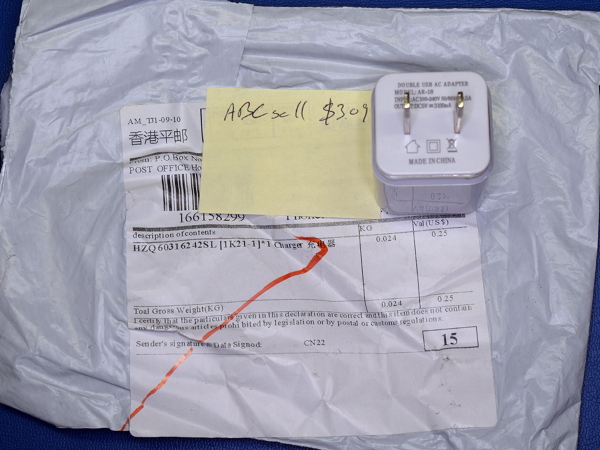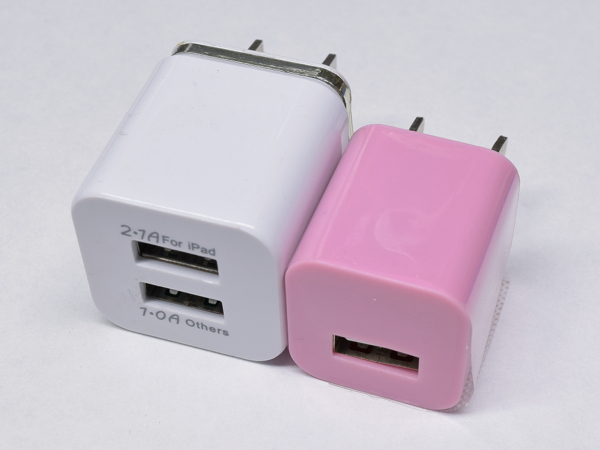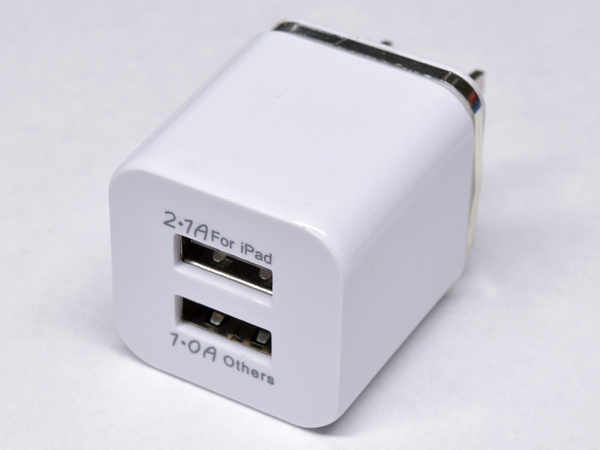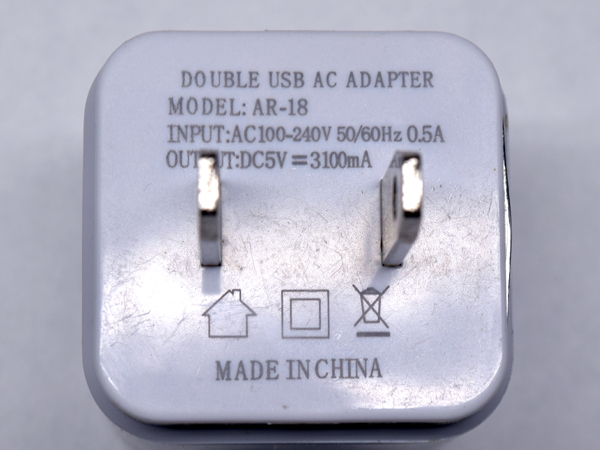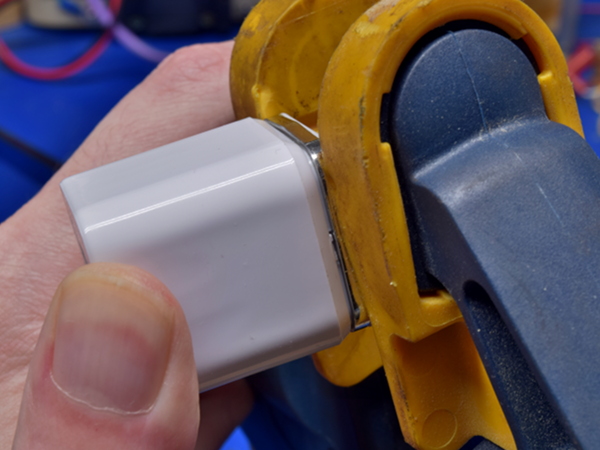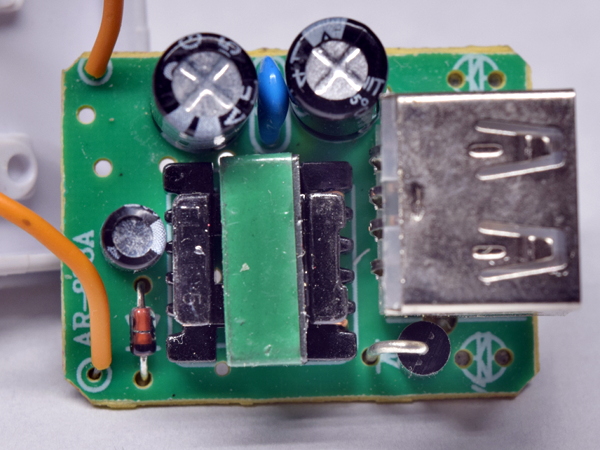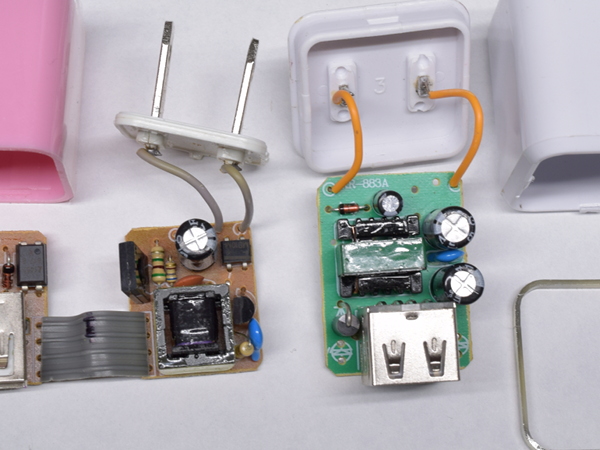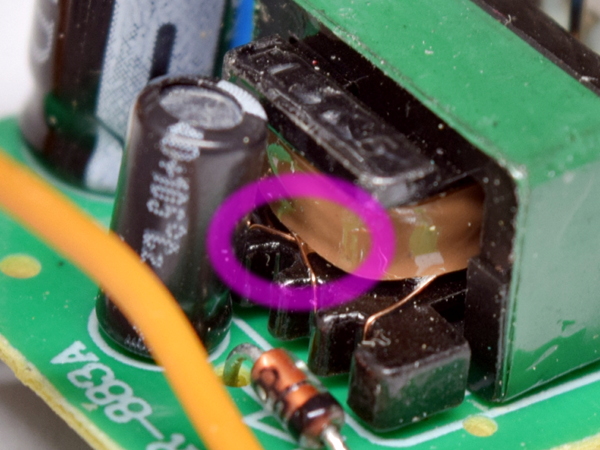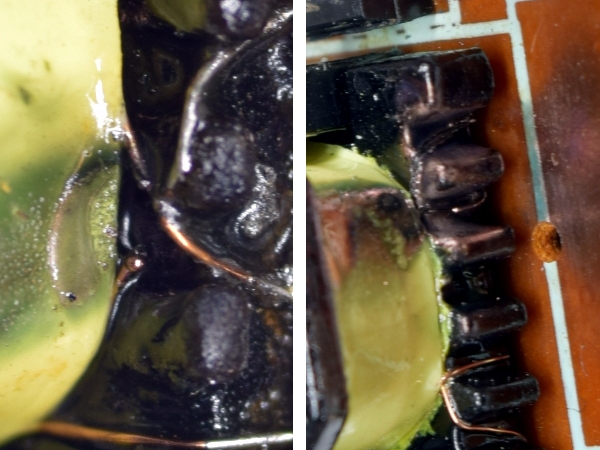ABCSell AR-18 USB Power Adapter Tear-Down: Another Death Trap
Stepping Up To Slightly Bigger Generic Adapters
We’ve seen a few A1265 look-alikes already, and they've all been fairly horrible. Before we resign ourselves to touring another throw-away adapter, let's have a look at a slightly larger one that should, in theory, have more internal room for better isolation. Today we're digging into ABCSell’s $2.25 AR-18, on the left. Will it fare any better than the miserable failures that precede it?
Packaging
Like most other small items drop-shipping from China, this adapter made the journey in a generic plastic bag. According to its customs declaration, the shipper values the adapter at $0.25. That figure may very well be closer to its true worth than the $3.09 (CAN) I paid. Hopefully, I'm proven wrong.
Size Comparison
At three millimeters (1/8”) wider and four millimeters deeper than the A1265’s form factor, this slightly larger adapter style is actually about 40% bigger by volume. That’s quite a bit more than what I would have estimated at first glance. By weight, it is 20g versus 16g, mostly due to the extra plastic.
Shell Exterior
Up front, we find two ports instead of one, courtesy of the extra space afforded by a taller enclosure. One of them is marked “2.1A For iPad,” while the other is marked “1.0A Others.” In all likelihood, both ports are connected to the same 5V rail and there is nothing device-specific to either port.
Near the back, a silvery plastic band covers the holes holding the snap-in prong cap.
Label
What do we get on the label? Exactly what I would expect from a $3 adapter: no safety marks, no brand, and almost assuredly unrealistic ratings. If I had to guess at this device's chance of satisfying its 3100mA output rating on a scale from 0 to 10, I'd give it a zero. Based on how every generic 1A adapter has struggled to supply more than 600mA without either self-destructing or cutting out, it would be surprising to get even 2A out of this one.
Cracking Open
Prying the plug cap away from the rest of the housing far enough to insert other tools requires considerable force. Once the first wedge is successfully inserted, running a second one around the perimeter completes the job with moderate added effort.
Get Tom's Hardware's best news and in-depth reviews, straight to your inbox.
First Glimpse
With the cap popped off from the main body, you can see four tabs and matching slots securing it to the enclosure. Similar to all of the other generic adapters, the AC prongs connect to the circuit board using wires soldered directly to the prongs. But unlike the A1265 look-alikes, this one crams everything on a single circuit board, eliminating the need for a board-to-board ribbon cable.
Board Top
There's not much to see up top, aside from an SD-branded 400V 3.3µF primary capacitor that'd barely be adequate in a 1A adapter, a 470µF 10V United output electrolytic, a 3.3µF 50V feedback cap, a pair of through-hole diodes, the transformer, and the USB ports’ shield. The input filter capacitor is located right next to the output filter capacitor, with a tiny blue 1nF 1kV non-Y-rated capacitor in-between.
We’re just getting started and this thing already falls into don't buy, don't use territory.
This Doesn’t Look Right
Something doesn’t look right in this picture. The pink A1265 on the left could barely handle 600mA. Meanwhile, the AR-18 on the right claims to be capable of 3.1A using a transformer with an even smaller core size. The AR-18’s core only looks bigger because its terminals are on the coil form outside the core’s footprint, while the A1265’s coil form has its terminals tucked underneath.
Unless the AR-18 is operating at a much higher frequency using a higher-quality ferrite core, this adapter has no chance of delivering 3.1A. Even 1.5A might be optimistic.
Crossing Wires
The wires going to coil form terminals aren’t double-isolated, and two wires are crossing each other on the primary side. Where have we seen that recipe for catastrophic failure before?
Deja Vu
The last time we saw wires cross on the primary side was in my previous tear-down of A1265 look-alikes, ending with the two wires arcing to each other and spewing copper plasma all over their surroundings.
Will the AR-18 even survive normal testing, or will it share the same fate? Even if it survives testing, I wouldn’t hold my breath for long-term reliability.

